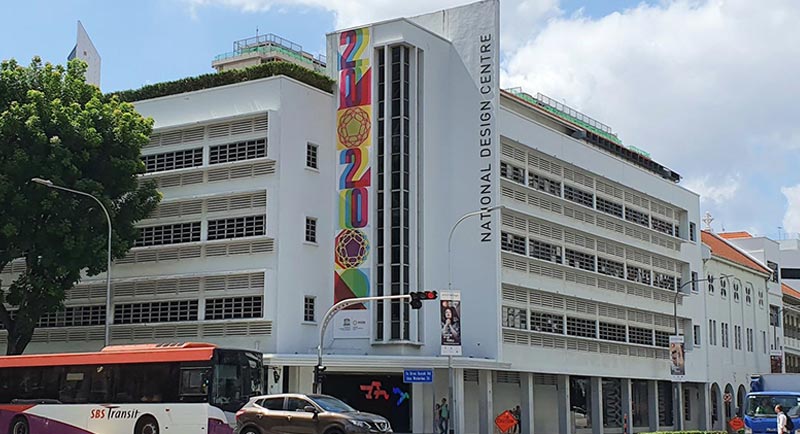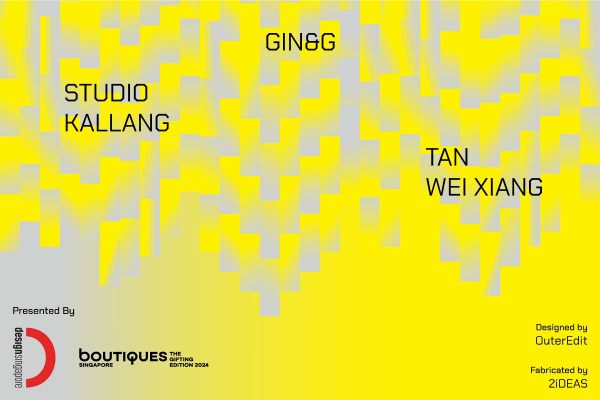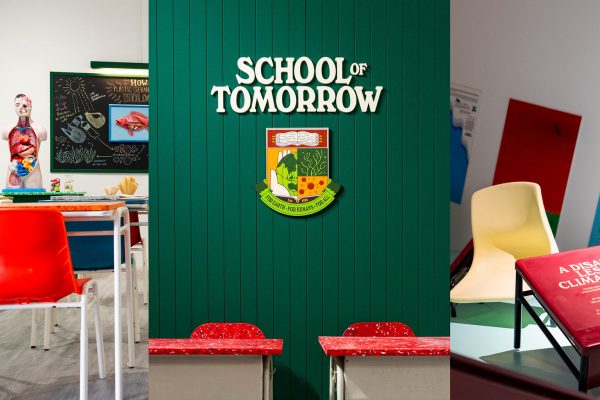Faced with a rising demand for healthcare and hospital beds from the ageing community it served, the Khoo Teck Puat Hospital embarked on a human-centred and design-led journey to come up with innovative ways to encourage elderly residents to stay healthy and connected to their community.
Challenge
The northern region of Singapore includes Yishun, Sembawang and Woodlands. Yishun has a population of 200,000 residents, with approximately 20,000 residents above the age of 65 years. It represents a community of residents who have aged in their neighbourhoods.
In a rapidly ageing Singapore, rising chronic diseases, an increasingly complex healthcare landscape and growing dissatisfaction with healthcare experience have given rise to low health literacy and lack of autonomy and ownership of a person’s health.
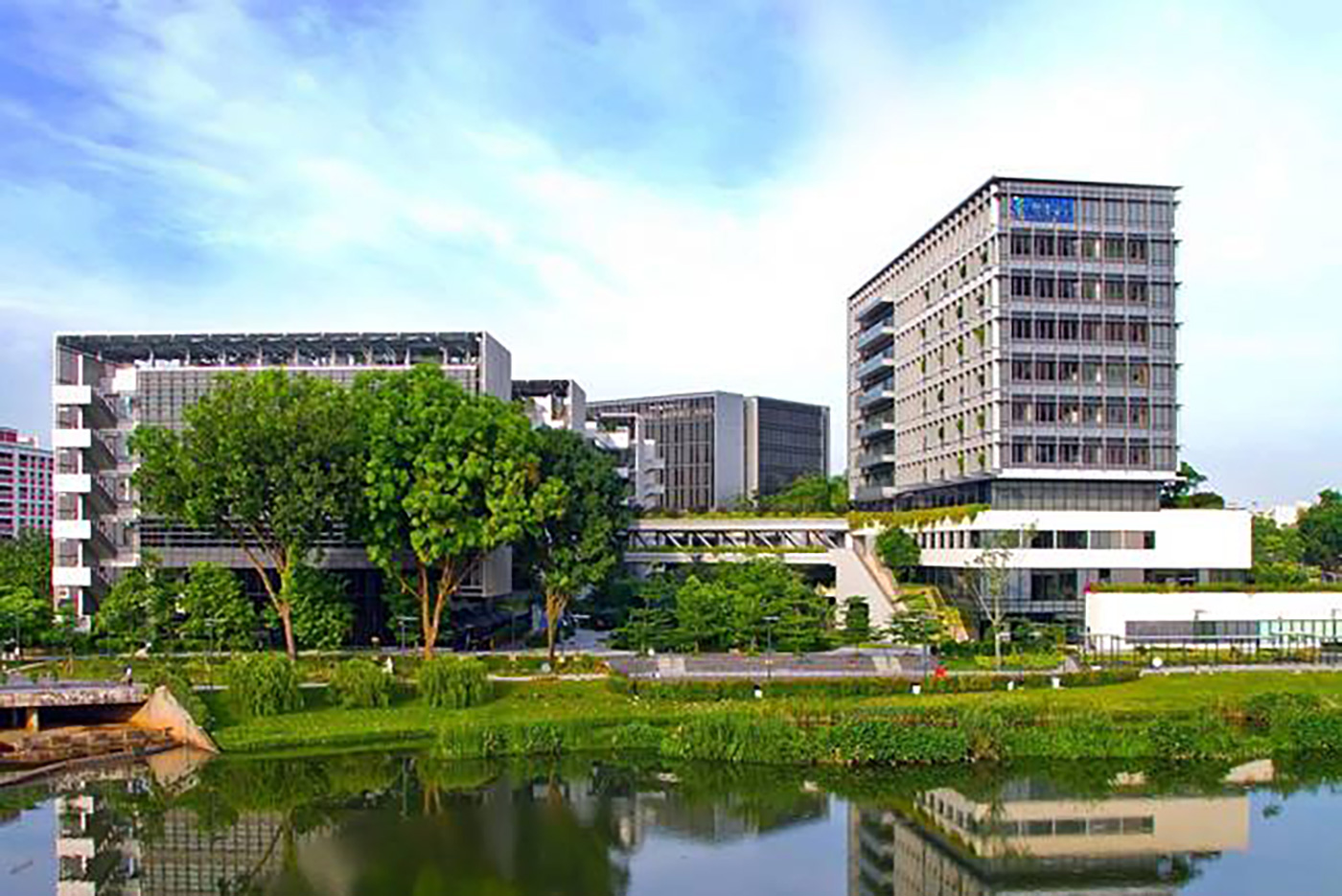
opened in June 2010.
At Khoo Teck Puat Hospital (KTPH), the current flagship hospital in the north, patients keep returning to the hospital or are opting to stay in the wards longer instead of receiving care at home. Hospital administrators face the challenge of sending home patients who could be served better in their homes so as to make room for patients who really need the expertise and equipment of hospital care. This resulted in a sustained over-demand for subsidised beds within 10 months of KTPH’s opening in 2010.
In addition to health needs and rising costs, older adults face various concerns related to ageing such as dwindling financial resources and social networks. In-depth interviews with residents in Yishun West found that residents felt a loss of the “kampung spirit” or strong ties and trust within the community of the past that had encouraged the development of relationships and support for each other.2
Good medical care in acute health crises, coupled with sustained healthy lifestyle habits in a supported network of caring family, friends and neighbours go a long way in building the concept of good health, individually and as a community. Beyond the hospital, there is a huge opportunity for every resident to take charge of their health with the support of the community.

The uncertainty brought about by ageing and the need to seek connection with others just like in the old kampung days in the neighbourhood drew older adults into the public spaces to re-create a sense of community with others.
Solution
According to Dr Wong Sweet Fun, senior consultant in KTPH’s Geriatric Medicine department and Clinical Director of Yishun Health’s Population Health and Community Transformation, “Just focusing on addressing medical needs, which constitute 10 per cent of patients’ health determinants, is inadequate to keep them well in their homes and community. Sixty per cent of one’s health is determined by social, behavioural and environmental factors.”1
An eight-month ethnography research was done to understand how the older residents interacted in community spaces. The research covered a total land area of 1.3km2 and collected 259 hours of interview records conducted with 79 residents, together with 1,796 photographs and videos. To gain a holistic view of the community, interviews were conducted at different times and days to involve different community stakeholders, from the residents to store owners and members of the merchant association.2
The researchers observed the creative ways in which the residents used public spaces. In-depth interviews also distilled some themes that mattered to the older adults: the need for security and freedom, the importance of having meaningful roles and responsibilities, and staying connected while being relevant to the community.
The uncertainty brought about by ageing and the need to seek connection with others just like in the old kampung days in the neighbourhood drew older adults into the public spaces to re-create a sense of community with others. Five archetypes of residents were identified to help the research team understand the community dynamics and roles of respondents to the study.
An exhibition on the ethnography study was then created to inform these insights and solicit ideas from KTPH staff and visitors. Approximately 300 visitors have visited the exhibition. Study trips to Japan and local social service centres helped the design team to learn effective ways to engage the community.
In 2016, KTPH launched an initiative called the Wellness Kampung®, a network of three wellness and care centres at HDB void deck spaces to provide a platform for a suite of health and social programmes.3
This meant empowering residents to exercise choice and control in their daily health and wellness decisions through preventive measures such as healthy cooking and food selection, daily exercise, health screening and coaching.
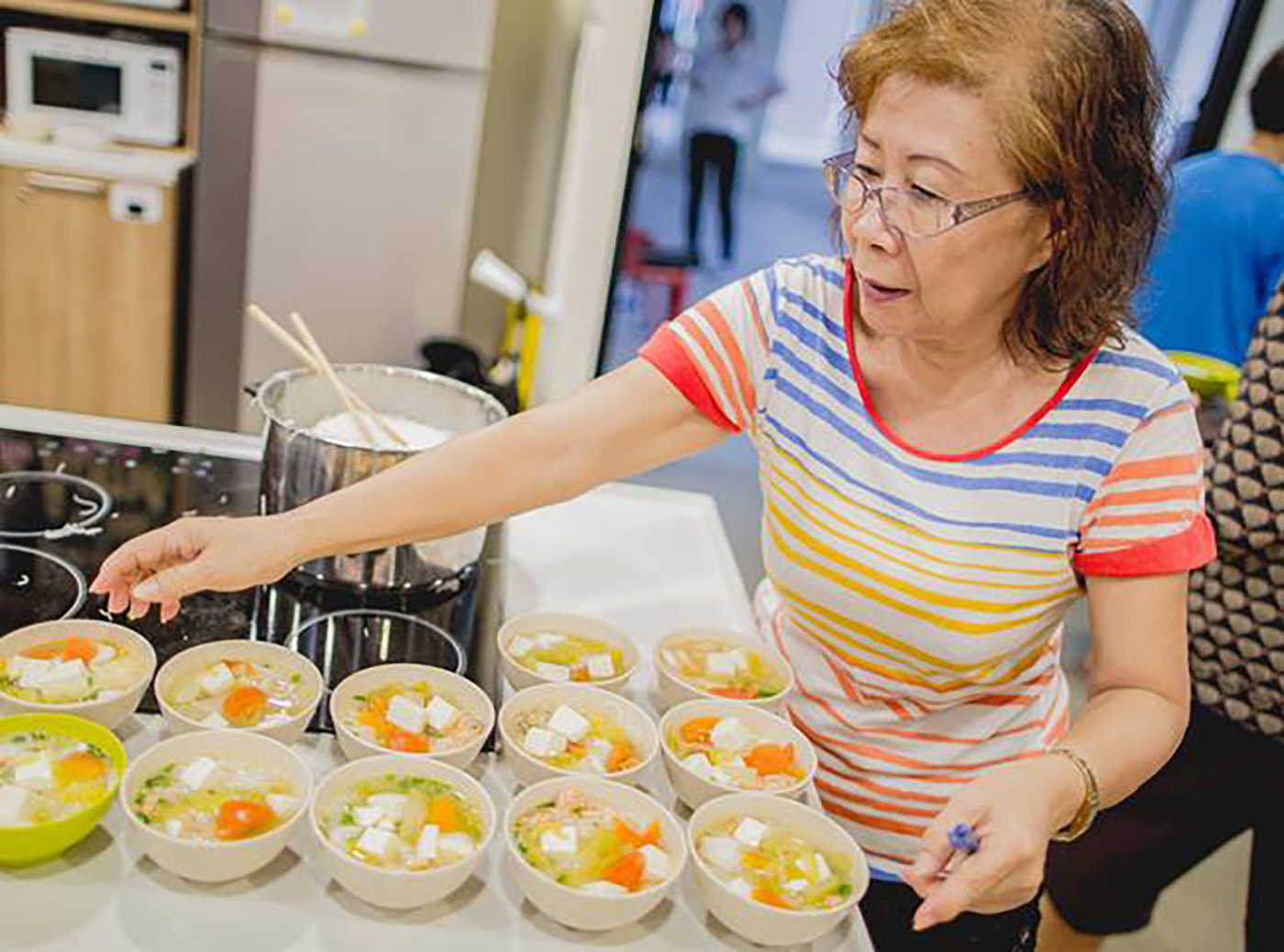
The community living room concept was designed to build a stronger support network for residents to inspire each other to adopt healthier lifestyles. Residents who visit the Wellness Kampung were regarded as community assets and strengths; they planned and implemented the programmes, drawing upon talents and experience among themselves. The “stealth health” component was integrated into their daily choices in a natural choice architecture.
A deliberate design to blur the boundaries between interior and exterior space, using see-through folding glass walls, serve as an invitation for residents casually passing by to observe, enquire and eventually use the premises for their enjoyment. The use of positive language to convey the emphasis on wellness and community was key in the design. Technical terms used by healthcare professionals were dropped in favour of commonly used words, for example “food” and not “nutrition” or “diet.”
As part of the Wellness Kampung initiative, the award-winning4,5 Share a Pot® programme was introduced to improve nutrition, fitness and social networks of the residents. Residents get together to exercise and then enjoy a bowl of nutritious soup together. The combination of exercise and protein in the soup stimulates a prolonged increase in muscle synthesis for as long as 24 hours after consumption. Beyond these weekly meet-ups, residents take ownership of their own fitness by tracking their daily steps with pedometers in exchange for reward stamps and tokens of participation. Regular participation gives residents the opportunity to fill their time with meaningful activities and expand their social circles, with many of the residents beginning to look out for each other.
Community nurses regularly hold conversations with residents at the Wellness Kampung on health concerns. These sessions are a welcome resource for simple ailments, hassle-free referrals to community help and advice for the residents. Over time, the nurses have gained the residents’ trust to become “their nurse friend.”
Impact analysis
(Statistics as of end December 2018)
Over 2,200 residents have registered with all three centres in the Yishun district, with each seeing an average of 75 residents daily. Seventy-four new programmes have been started, which included opportunities for exercise, meaningful engagement, health interventions. Nineteen (26%) programmes are led by healthcare staff, e.g. a fall prevention programme, Advance Care Planning advocacy sessions. Twenty-eight (38%) programmes are led by partners, e.g. intergenerational activities by five neighbourhood schools, Life After Stroke, and Autoimmune Illness support groups.
Twenty-seven (36%) programmes are led by volunteers. One such volunteer is Mr Norman Wee who branded his aerobics sessions after himself (Weirobics). Eighteen out of 27 of these continue to be active over extended periods, proof that community resources can propel action and build self-supporting ecosystems.

Residents have also found support for themselves within these communities. For example, a 68-year old lady who had sustained several falls, and was fearful of further falls whenever she wanted to leave her house. She became progressively homebound and continued to fall at home, requiring frequent hospital admissions.
A community nurse encouraged her to go to the nearby Wellness Kampung where she was befriended by a 79-year old neighbour. Since then, the two neighbours have become good companions, and together they have ventured out confidently into the community. At another Wellness Kampung, two neighbours voluntarily supported a 51-year old man with stroke and an 84-year old lady with Parkinson’s disease, with “do-it-yourself style” rehabilitation. The two beneficiaries registered improvements in their physical function. The community nurse maintained a reassuring and motivating presence for both the volunteers and the residents receiving support. Many such stories abound.
The café-like interiors and modular spaces of Wellness Kampung@765 won an SG Mark design award in 2017 for its transformation of a HDB void deck into a liveable, welcoming space with features such as simulated skylight and “blackboard menu” walls. The Wellness Kampung initiative, together with its signature programmes Share a Pot and Community Nurse Posts was selected as the Gold Award Winner in the Best in Healthy and Active Ageing Services in the Asian Elderly Care Awards 2019 on 11 Jan 2019.5.
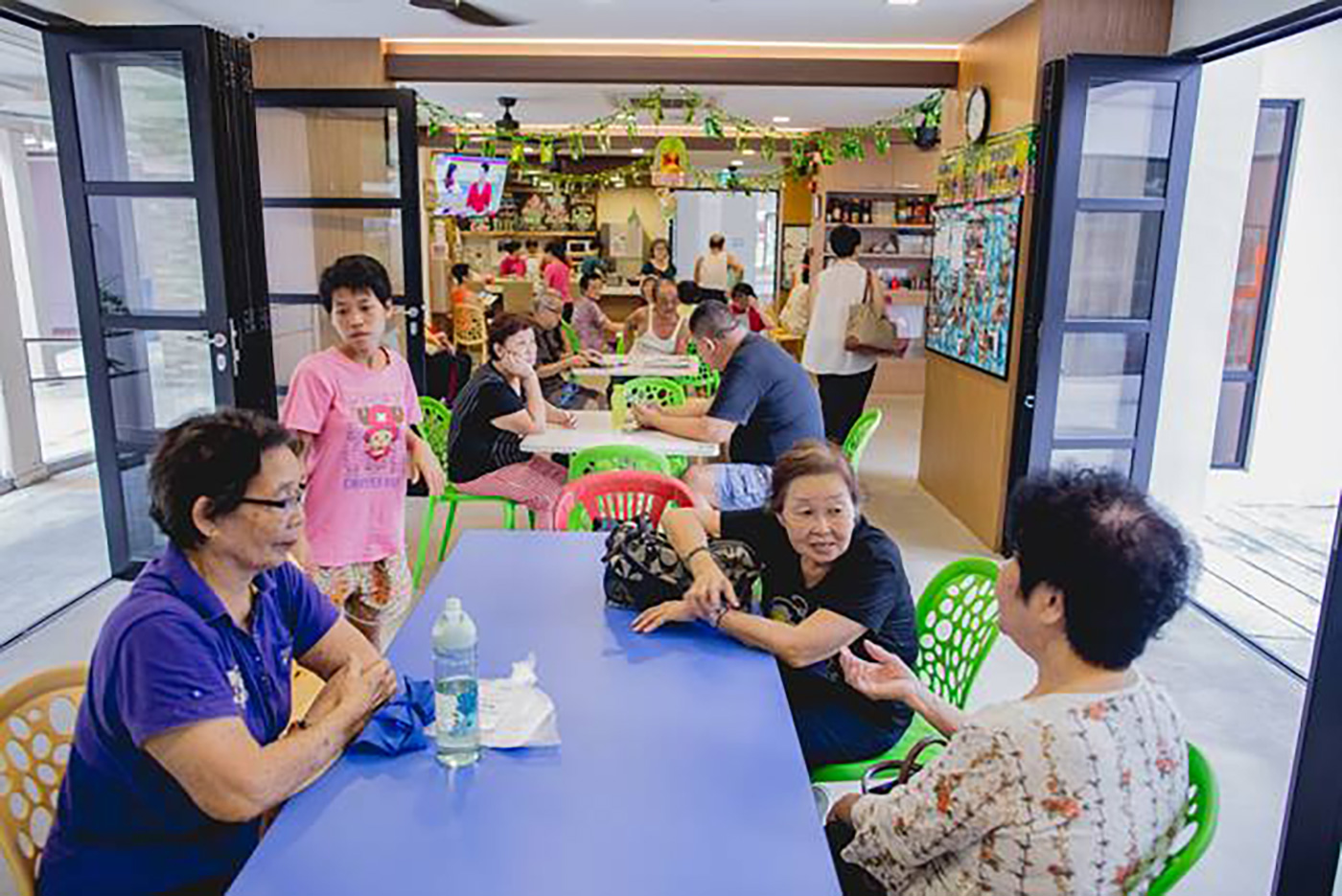
As of 2018, Yishun Health has set up 26 active Share a Pot sites and registered almost 1,800 participants, of whom 1000 are regular attendees. The Share a Pot sessions are held at accessible community locations, including the three Wellness Kampungs.
1 “Alexandra Health scheme wins UN public-service award”, Straits Times, 26 June 2014.
Attachment
Alexandra Health scheme wins UN public-service award
Straits Times, 26 June 2014
2 Tan L, Wong SF, Loh Z, Lee WC (2018). Healthy Self-Management Communities by Design. In: Cristiano Storni (Ed), Proceedings of DRS2018: 6, pp. 2390–2406. Limerick, Ireland: Design Research Society.
3 Wong SF (2018). A Case Study in Re-imagining Healthy Communities. In: Chong KH & Cho M (Eds), Creative Ageing Cities: Place Design with Older People in Asian Cities. (pp. 47-60). Routledge
4 https://ifworlddesignguide.com/entry/238094-share-a-pot
5 https://managingelderlycare.com/awards/asian-elderly-care-awards-2019-winners/


